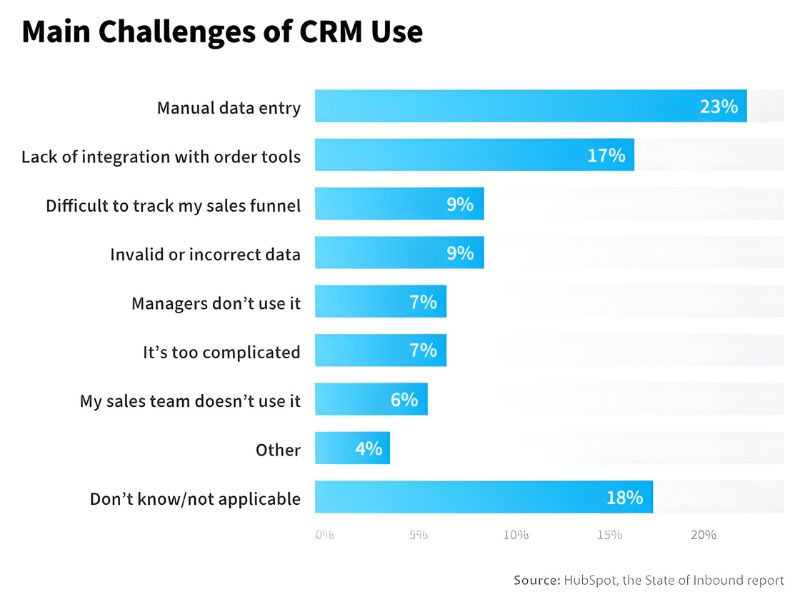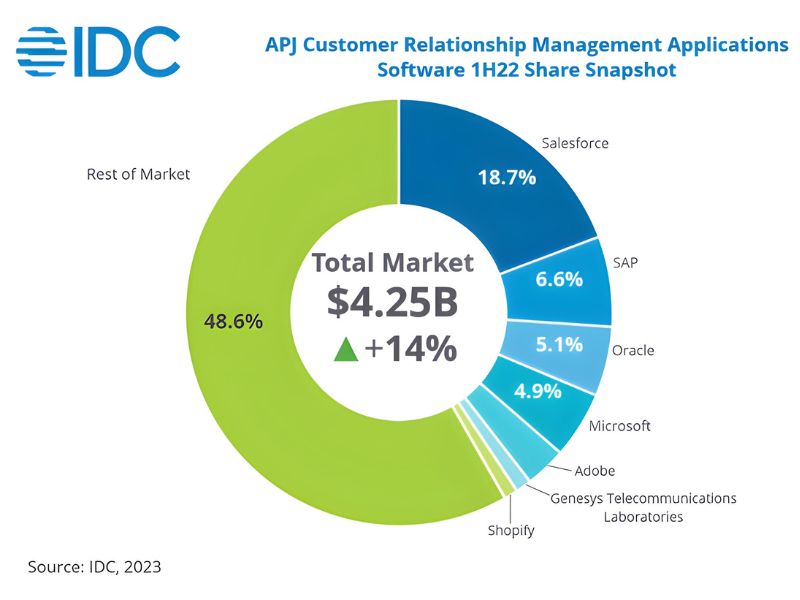For many years, custom CRM development services were the only option businesses had to optimize their commercial management processes. Acquiring a CRM was more complex than it sounds. A company with experience in CRM development and implementation (such as blionsoft.com) would be consulted, the organization’s requirements and goals would be analyzed and designed, and these needs would then be adapted to a pre-existing CRM system solution. The implementation project would take place, and after a reasonable time—sometimes after several months—the organization could finally use the CRM system, which was exclusively designed for them.
I have participated in several projects of this kind over the years, some more successful than others. Due to their high costs, these solutions were typically reserved for relatively large organizations, where their operational demands and allocated IT budget justified such investments.
Then came Software as a Service (SaaS) solutions, which democratized access to tools that were previously out of reach for many companies. With a monthly subscription fee of $125 per user, businesses could access a CRM solution that offered a standardized process model, requiring organizations to “adapt” and reshape their operations to fit these solutions. I have also seen organizations, which previously couldn’t afford these CRM SaaS platforms, subscribe to 10 or 20 licenses for their sales executives and make monthly payments to immediately benefit from these platforms.
Over the years, various shifts occurred, from small businesses adopting SaaS CRM solutions to even large organizations abandoning their custom CRMs in favor of services from Sugar CRM, SalesForce, Hubspot, and others. These large enterprises adapted to the prevailing processes and utilized all the tools these vendors offered at a lower price.

However, I have also witnessed organizations using custom CRM software migrate to CRM SaaS solutions by subscription, only to return to their previously developed custom CRM after a few months. They implemented a data RECOVERY project to move information from the SaaS CRM back to their custom CRM system—a reverse migration, so to speak.
After this historical overview, the question arises: Why did these complex migration flows happen? The answer is simple: NOT ALL ORGANIZATIONS ARE THE SAME. Many will disagree with this statement, but the reality is that organizations often mirror the behavior of their directors, particularly in commercial areas. This article aims to help you make a decision that is as close to correct as possible (we don’t claim to have the absolute truth). We will explain why many companies chose custom CRM solutions over SaaS solutions, regardless of the organization’s size or price differences.
Reasons
- While per-user subscriptions are affordable, the prices for custom features or specific functionalities needed by the organization were often quoted at extremely high rates by SaaS CRM providers. For instance, if an organization needed a specific feature for an upcoming sales campaign, the SaaS provider would quote an adjustment cost, with the average hourly rate being $100 to $150 minimum, making the modification expensive. If a modification took 30 to 40 hours or more, this small adjustment could easily surpass the subscription cost for all users for several months.
- When the application experienced issues or users needed support, SaaS CRM providers often offered email support. If phone support was needed, the cost would be much higher, and for urgent in-person support, the price would be reserved for very large organizations due to its high expense.
Open-source solutions gained robustness and popularity, eliminating the need to purchase costly CRM software packages to access custom CRM software. Organizations could download an open-source CRM package like vtiger, saving money on software purchases. Since open-source solutions are widely implemented by numerous companies, access to these solutions became more affordable. - Many organizations already have an internal or external IT team managing their cloud solutions, capable of deploying a custom open-source CRM like vtiger on platforms such as Amazon Web Services, Microsoft Azure, or Google Cloud Console.
- Open-source CRM solutions, by their nature, offer a wide variety of packages in the software marketplace, allowing organizations to quickly adopt functionalities to enhance their commercial processes. These solutions are supported by a growing community of developers.

With all this in mind, the question arises:
When to Use a SAAS CRM Subscription Solution:
- You manage a small sales team of up to 10 people.
- Your commercial processes are standardized. You sell goods and services (non-specialized markets).
- Your clients do not need to interact with other systems, or the systems they interact with are popular, and there are already connections between your CRM and those systems. Example: Salesforce or Zoho CRM with QuickBooks.
- You don’t require special functionalities in your CRM or need to connect it with a custom solution to enhance your processes. Example: Telecommunications companies that need to send usage reports to their clients or offer clients access to manage their phone lines. Clinics that require clients to download medical records, prescriptions, or book appointments (even though CRM solutions exist for the healthcare sector with similar features).
- You want to test how your sales team adapts to a CRM, meaning the initial investment will be much lower compared to a custom solution.
When to Use a Custom CRM Solution:
- Your sales team consists of more than 10 executives.
- Your business model is more complex, such as telecommunications companies, clinics, legal advisory firms, construction project companies, or vertical markets.
- Your operational process is or needs to be digitized. In other words, you use a somewhat comprehensive system for your regular operations.
- You need to provide specific solutions to your clients as part of your process, such as giving them credentials to download relevant information or interact with your processes.
- You frequently require new features in a short period.
From my experience in developing and implementing custom CRM solutions, if the SaaS solution you’re evaluating requires more than one change, you likely need a custom CRM solution. Over the long term (one year or less), with accurate financial calculations, a custom CRM solution often proves to be more efficient than a SaaS solution due to cost-opportunity analysis and return on investment.
While it’s often believed that a SaaS CRM solution is more cost-effective, the reasons outlined above demonstrate that it can be quite the opposite. Furthermore, open-source CRM solutions like vtiger are so robust and complete that they democratize access to custom CRM solutions for small and medium-sized businesses.